How to Score... on a Water Jet.
by houndstoothy in Workshop > Metalworking
18579 Views, 38 Favorites, 0 Comments
How to Score... on a Water Jet.
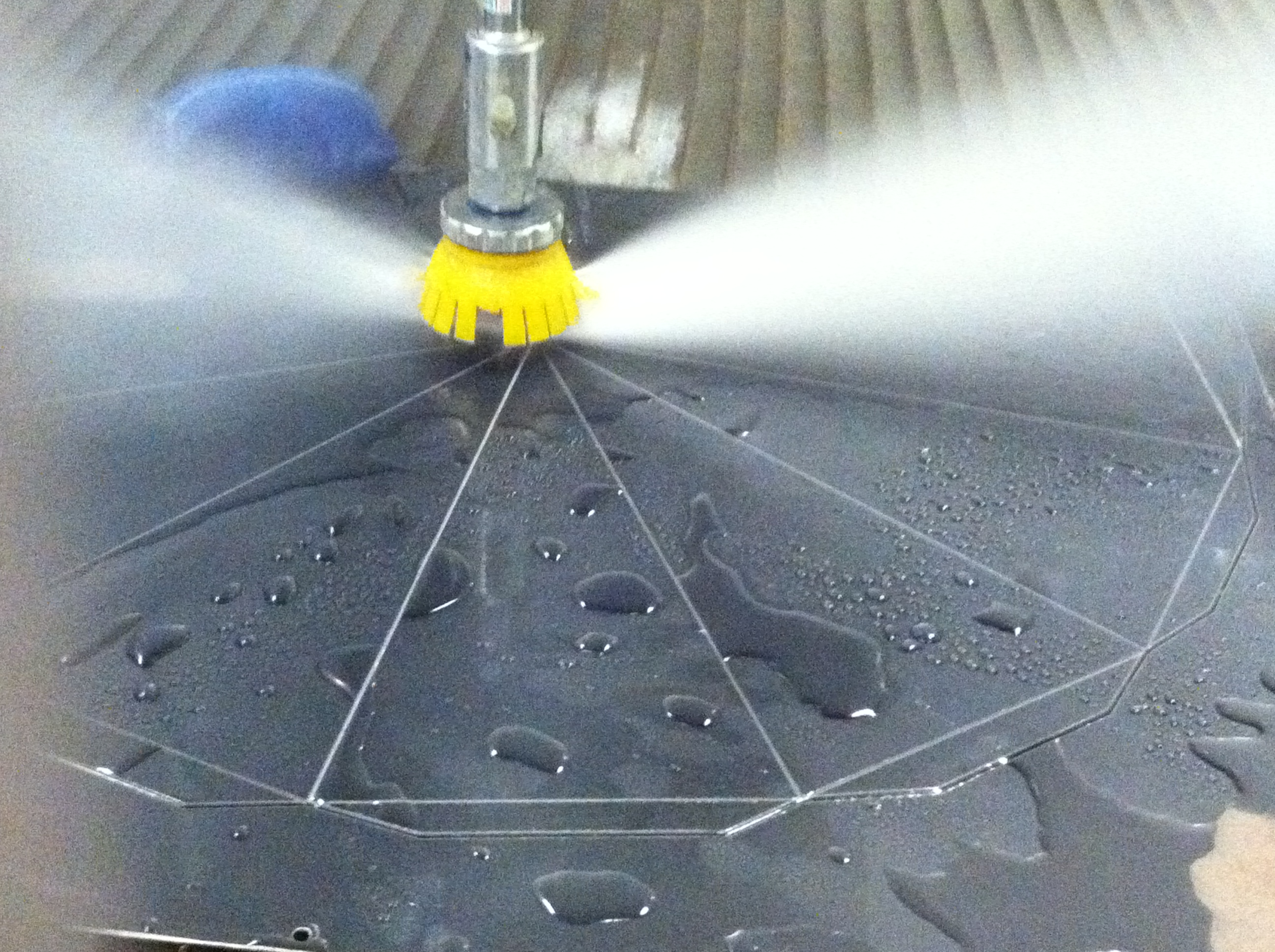
In this instructable, I'm going to explain the basics of scoring sheet metal (steel) to allow folds that are usually difficult on a finger brake.
It's usually nearly impossible to use a brake to fold lines to a point, so I'm using a pyramidal polyhedra to illustrate this concept.
Enjoy!
It's usually nearly impossible to use a brake to fold lines to a point, so I'm using a pyramidal polyhedra to illustrate this concept.
Enjoy!
File Preparation: Vectors & Flow Path Software
The first step is creating a pattern to cut & score: I chose a nice heptagonal pyramid.
You're going to be working with vectors, and the FlowPath software does best with files of type ai v 10 or autocad 10 dxfs. It is a bit finicky about the files it will open so make sure to back-save to one of these formats, and keep your original on hand for edits.
I'm not going to go into much detail about the FlowPath software we use to prepare cutting paths, save for the necessary info which is: there's a 'scribe' function. If you're familiar with the software, you know that you select the vectors you want to cut and assign speeds to them based on the level of precision you're hoping to achieve.
Make a box around your shapes; you'll be creating two separate cut files, one score and one cut, and to make sure they line up you'll want to have something to snap to the corner of the cutting envelope.
Next to those colorful speed buttons in the lower lefthand corner, there's a grey button which means 'scribe'. The water jet will move over all the vectors you assign this speed to at a much faster rate; the precise rate will be determined when you set up your material properties at the water jet itself.
Here are some pyramids to play with; thanks to [Copyright © 1998-2008 Gijs Korthals Altes www.korthalsaltes.com]
These are also great for the laser cutter.
You're going to be working with vectors, and the FlowPath software does best with files of type ai v 10 or autocad 10 dxfs. It is a bit finicky about the files it will open so make sure to back-save to one of these formats, and keep your original on hand for edits.
I'm not going to go into much detail about the FlowPath software we use to prepare cutting paths, save for the necessary info which is: there's a 'scribe' function. If you're familiar with the software, you know that you select the vectors you want to cut and assign speeds to them based on the level of precision you're hoping to achieve.
Make a box around your shapes; you'll be creating two separate cut files, one score and one cut, and to make sure they line up you'll want to have something to snap to the corner of the cutting envelope.
Next to those colorful speed buttons in the lower lefthand corner, there's a grey button which means 'scribe'. The water jet will move over all the vectors you assign this speed to at a much faster rate; the precise rate will be determined when you set up your material properties at the water jet itself.
Here are some pyramids to play with; thanks to [Copyright © 1998-2008 Gijs Korthals Altes www.korthalsaltes.com]
These are also great for the laser cutter.
Downloads
Set Up Material/ Home the Water Jet/ SCORE!

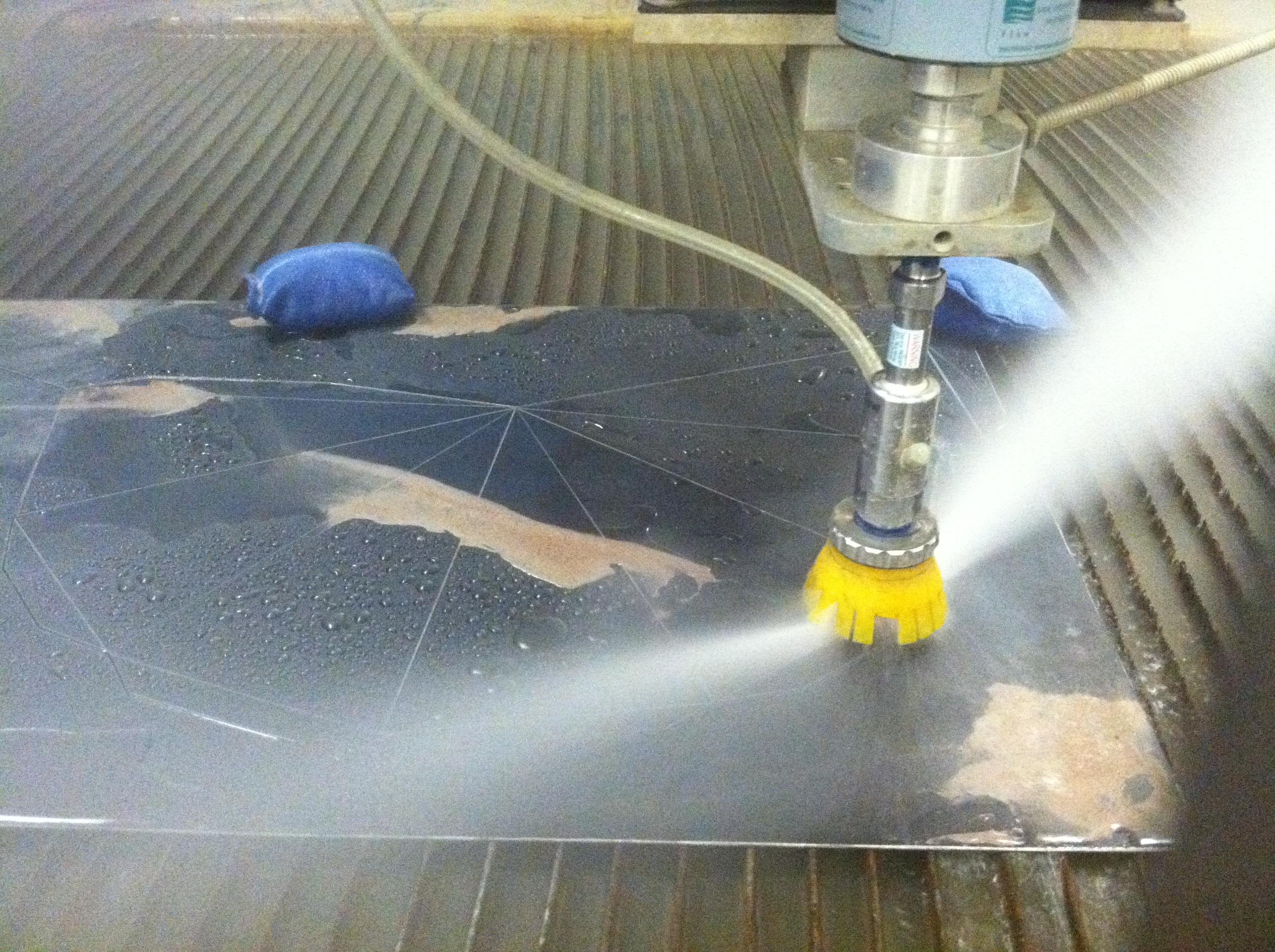
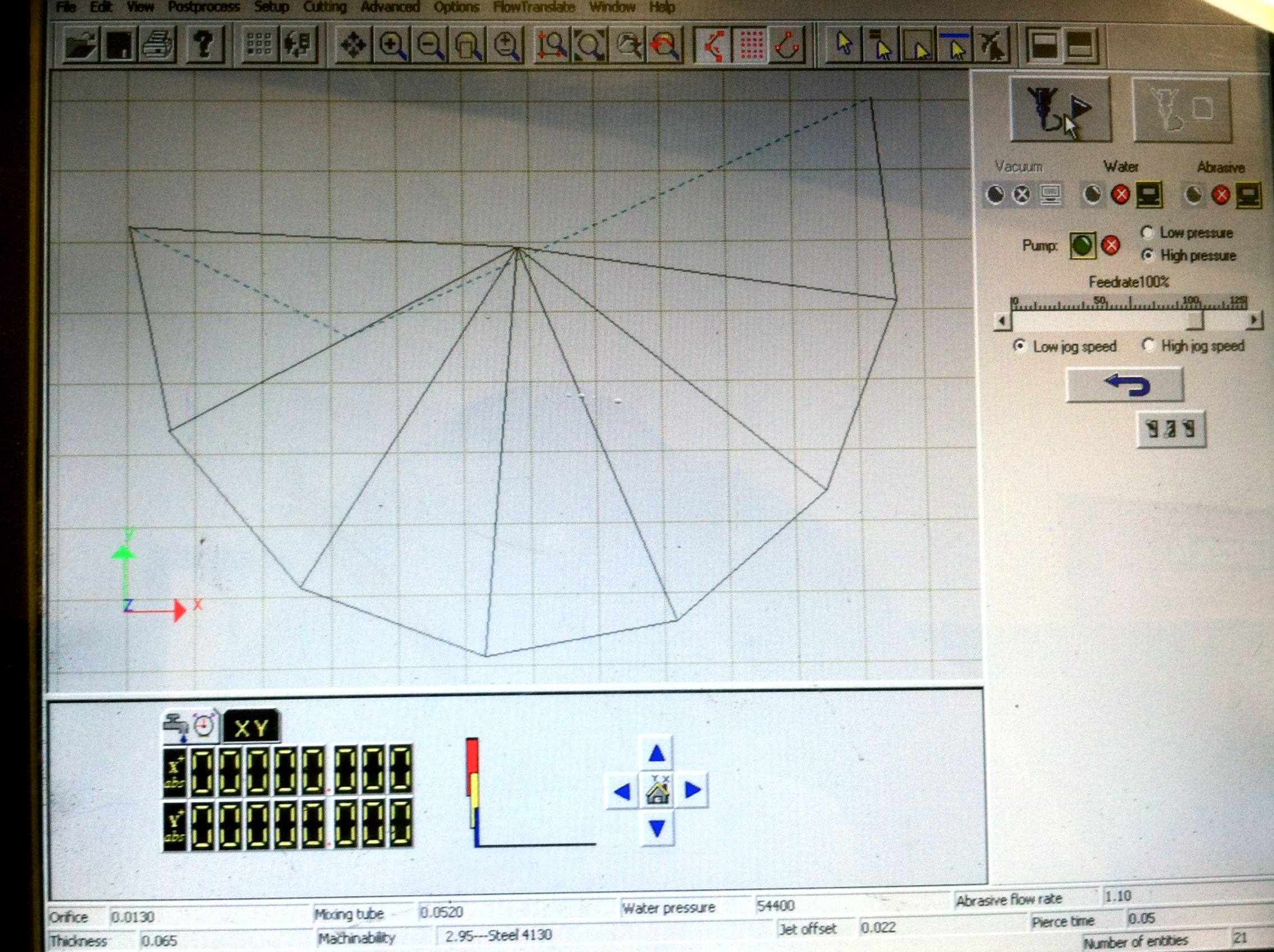
Again, without going into too much software detail; home the waterjet to machine home, and get your first file loaded.
You'll want to score before cutting, to keep the work holding simple. Place bean bags around the edges of your material and run the jet around the outer perimeter of where your cuts will be made to ensure there won't be any conflict.
Material Setup: This is very important for scoring, because this is how the water jet software calculates the speed at which the jet will move to scribe. This information gets entered into the software menu when you load your paths.
I used 12 gauge mild steel for this example which is generally too thick to use with our sheet metal equipment at TechShop, but works fine after being scored.
Once everything is set up, it's time to score. For steel, garnet abrasive is essential or you won't get enough depth in your cut; for aluminum, turn the abrasive off or the waterjet will probably cut through too much.
Scoring is loud and intense! The water will shoot off the surface of the material and it's very important to set up all the shields to prevent the thorough drenching of our metal shop.
You'll want to score before cutting, to keep the work holding simple. Place bean bags around the edges of your material and run the jet around the outer perimeter of where your cuts will be made to ensure there won't be any conflict.
Material Setup: This is very important for scoring, because this is how the water jet software calculates the speed at which the jet will move to scribe. This information gets entered into the software menu when you load your paths.
I used 12 gauge mild steel for this example which is generally too thick to use with our sheet metal equipment at TechShop, but works fine after being scored.
Once everything is set up, it's time to score. For steel, garnet abrasive is essential or you won't get enough depth in your cut; for aluminum, turn the abrasive off or the waterjet will probably cut through too much.
Scoring is loud and intense! The water will shoot off the surface of the material and it's very important to set up all the shields to prevent the thorough drenching of our metal shop.
CUT!
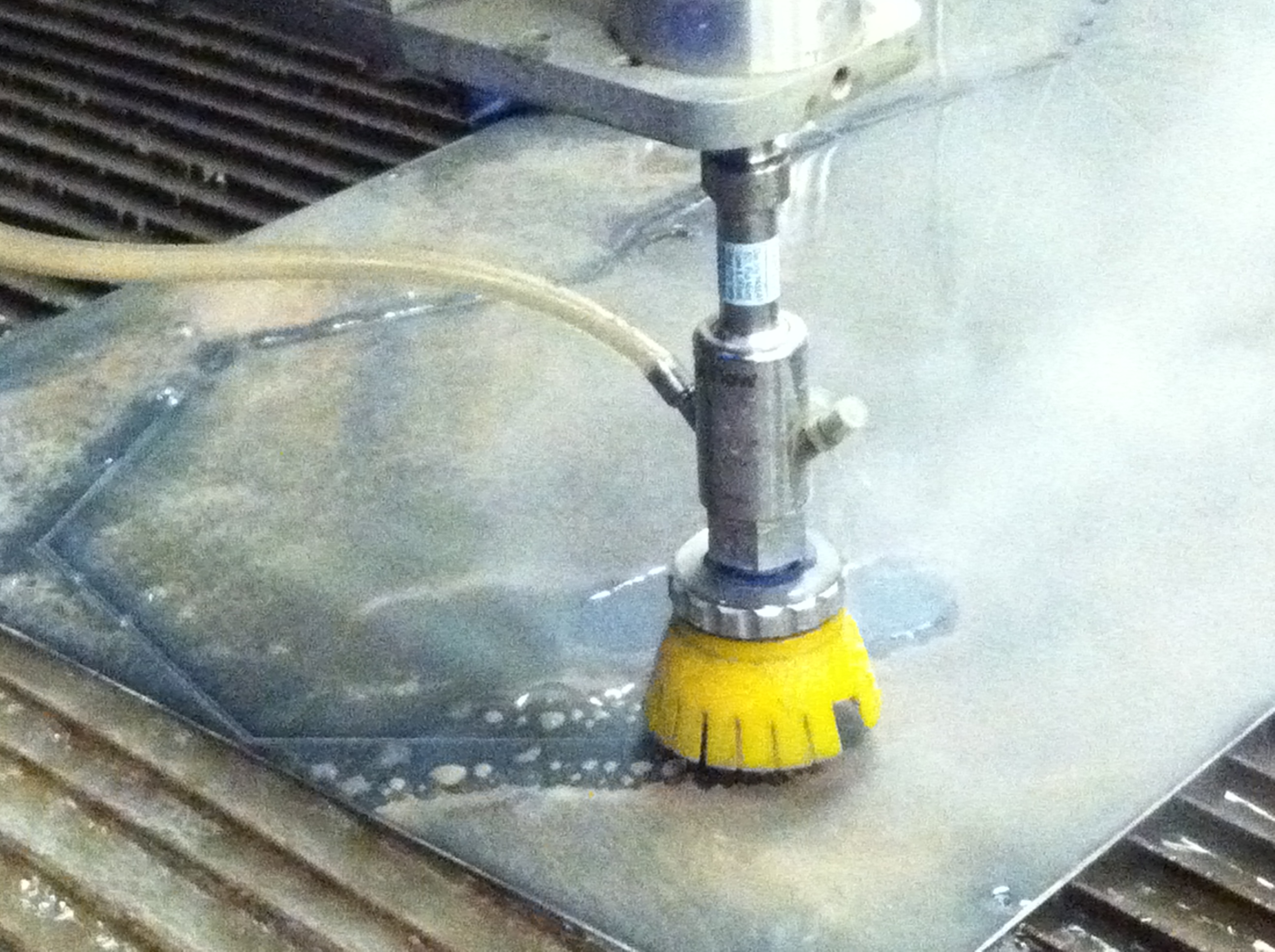
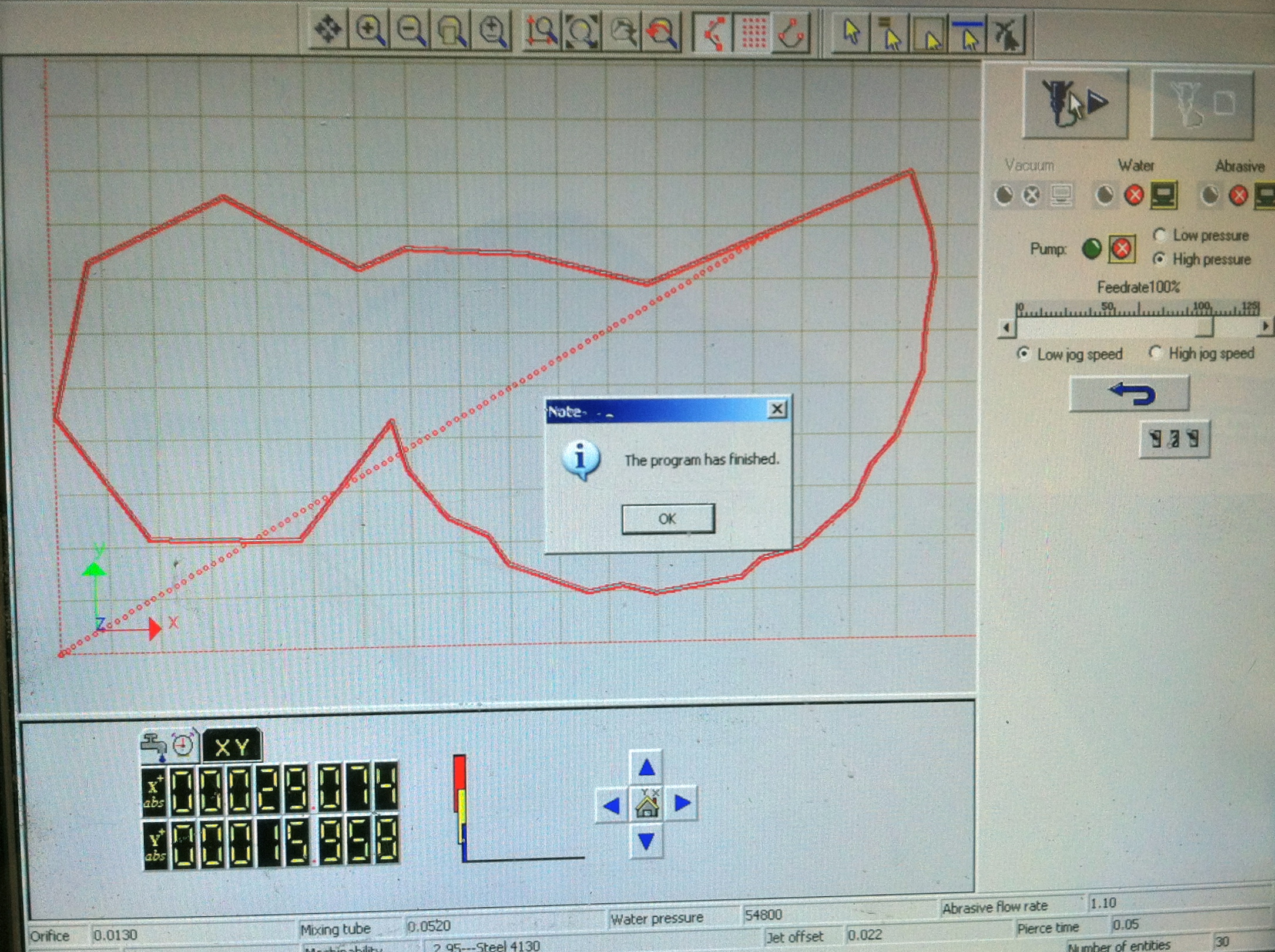
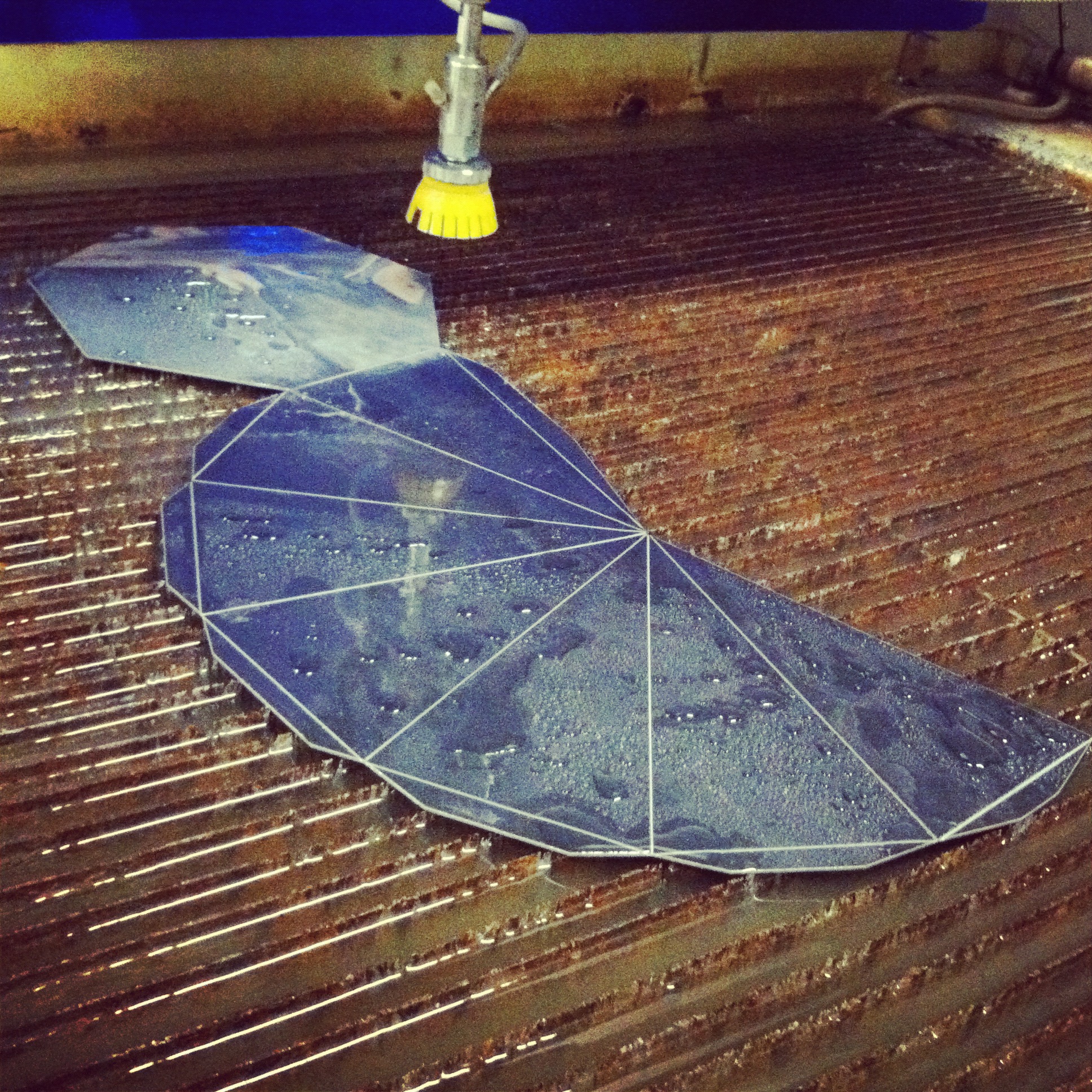
Now that your bend lines have been scored, it's time to cut out the perimeter of the shape. Set up the cut file once again (it helps to box in the vectors to ensure the two sets of paths line up).
Material setup... check.
Garnet on for cuts.... check.
Workholding... beanbag down the inside of your shape, making sure to avoid areas where the jet will cross the part as it cuts. Also beanbag down the outer edges of your material that will be cut away.
-CUT!
Material setup... check.
Garnet on for cuts.... check.
Workholding... beanbag down the inside of your shape, making sure to avoid areas where the jet will cross the part as it cuts. Also beanbag down the outer edges of your material that will be cut away.
-CUT!
Folding on the Finger Brake
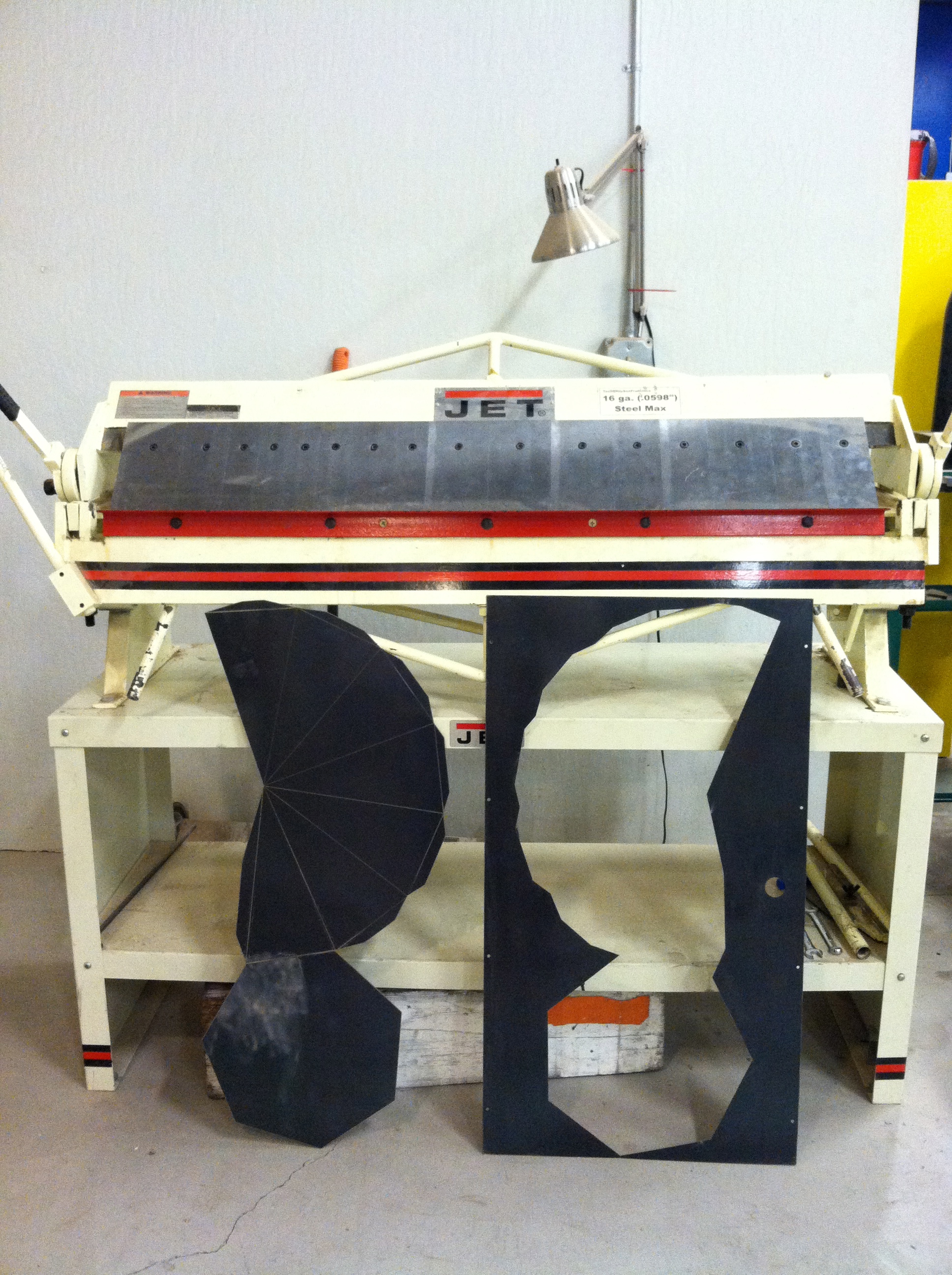
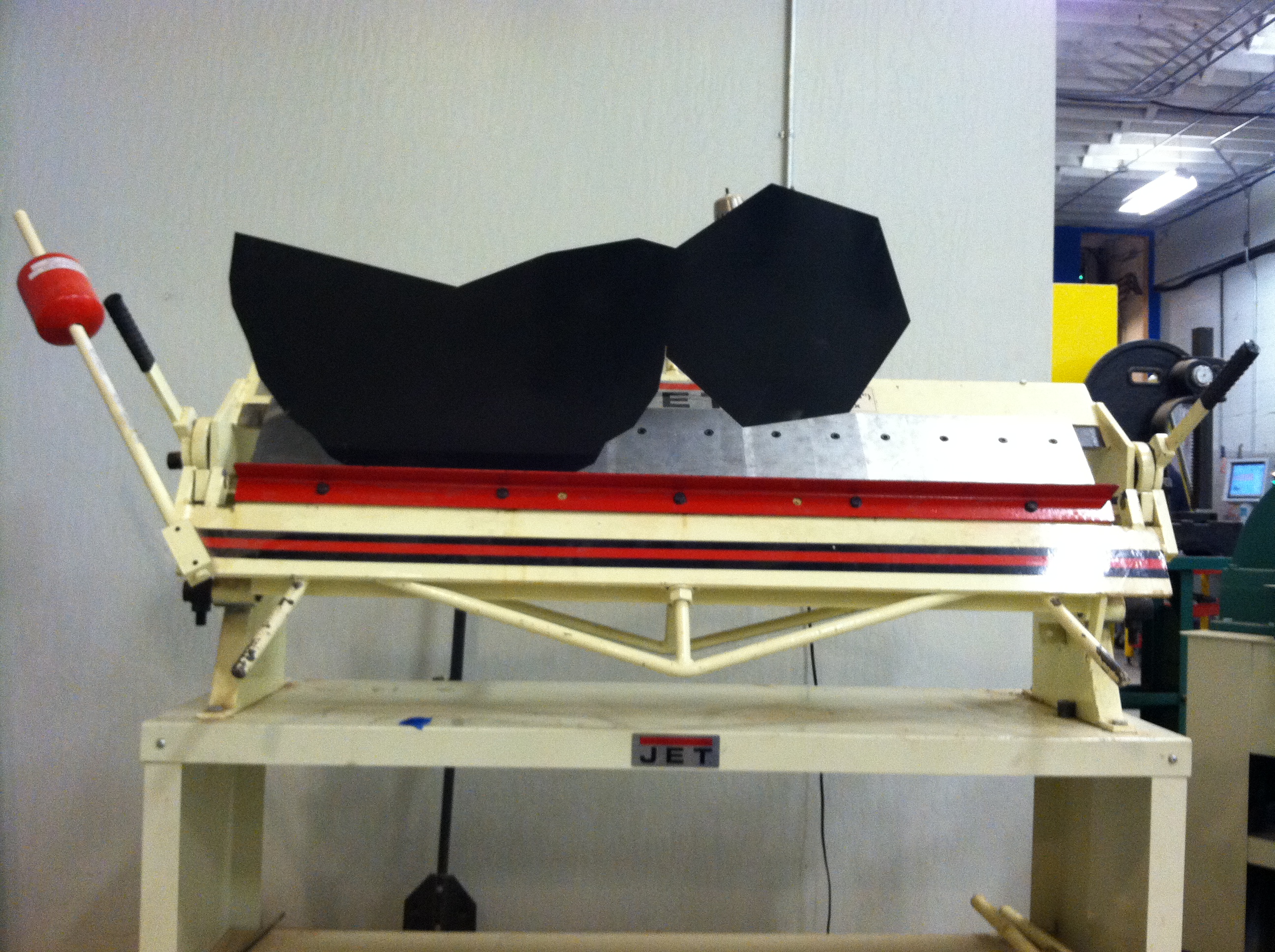
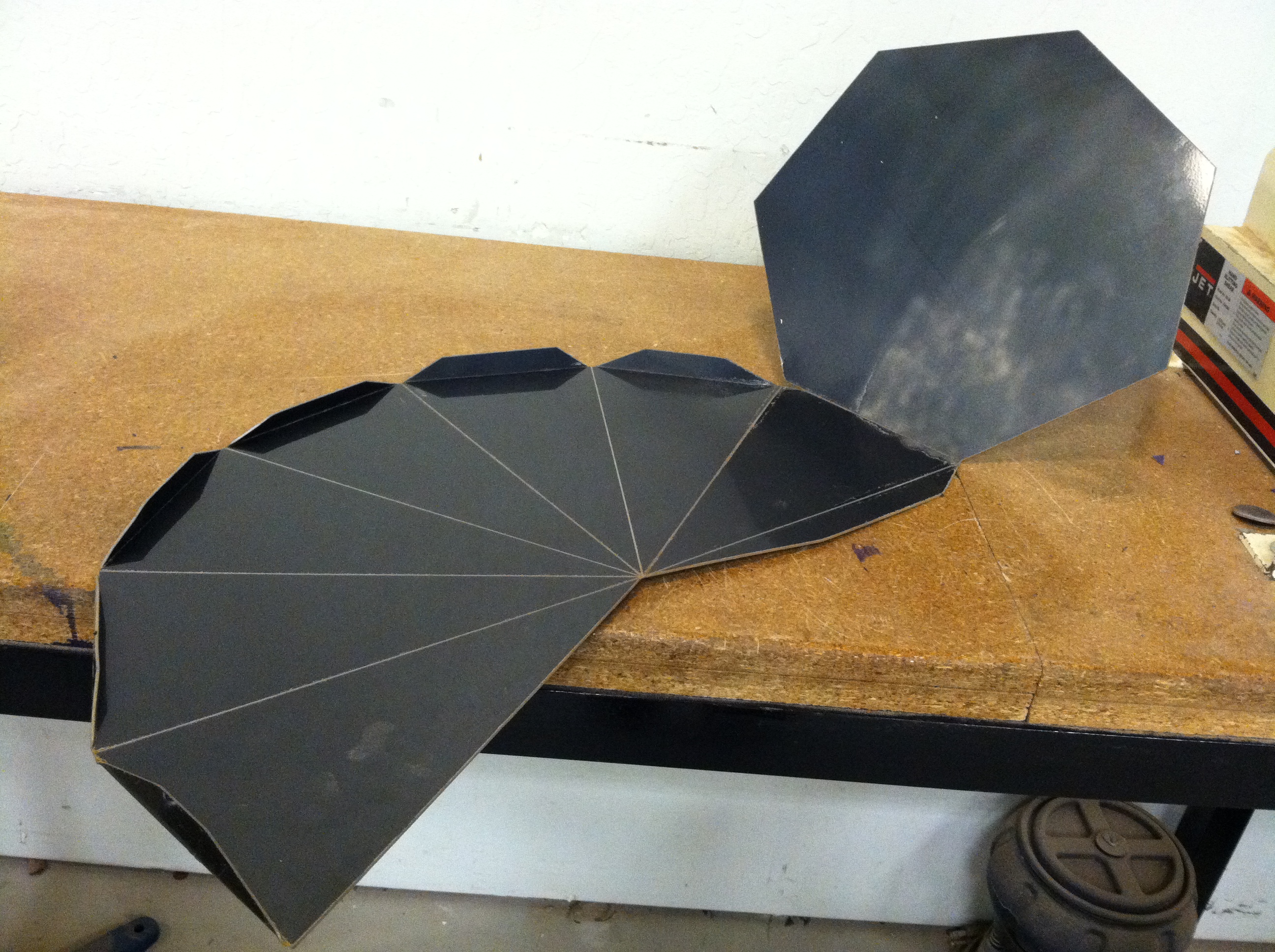
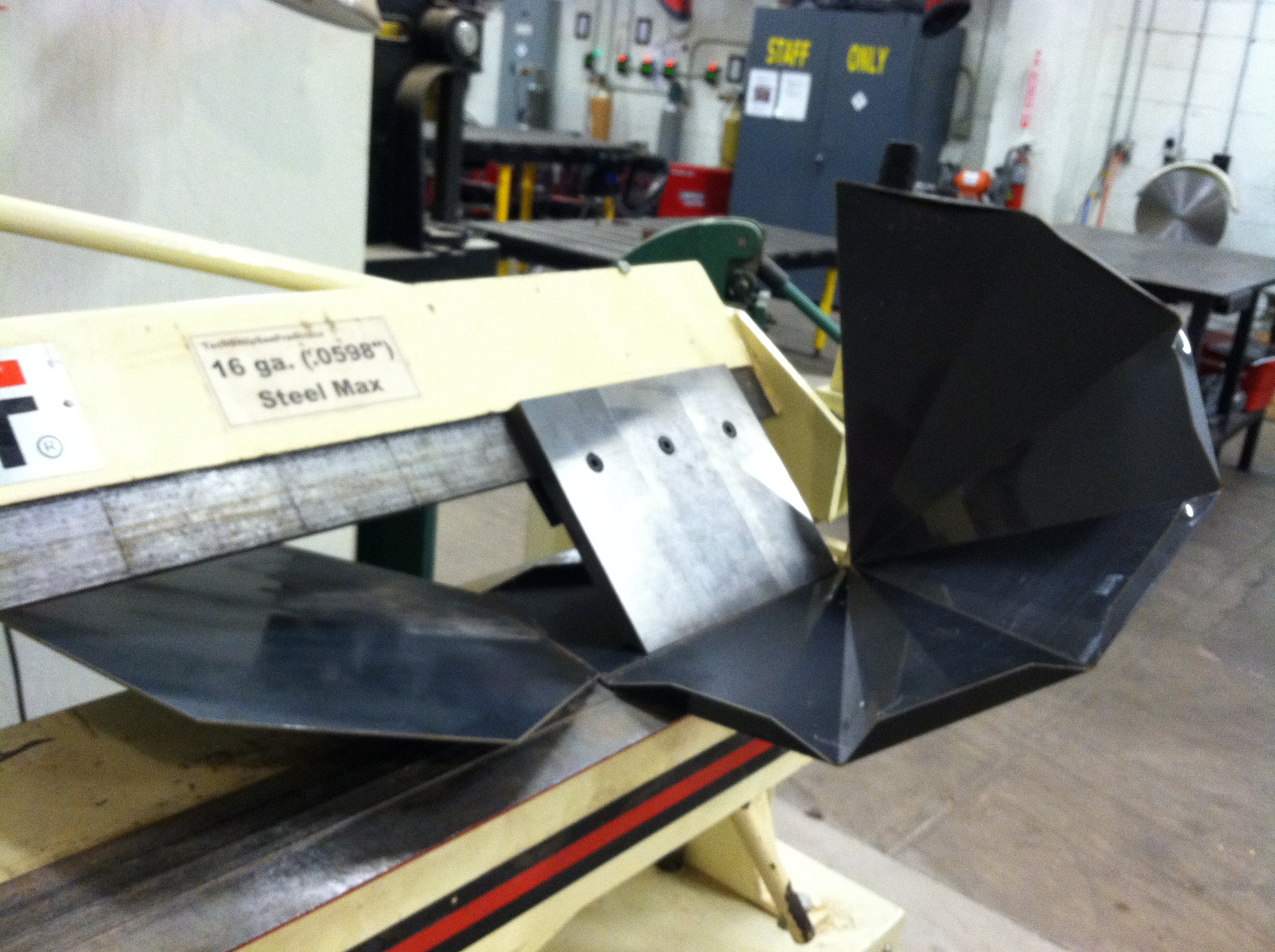
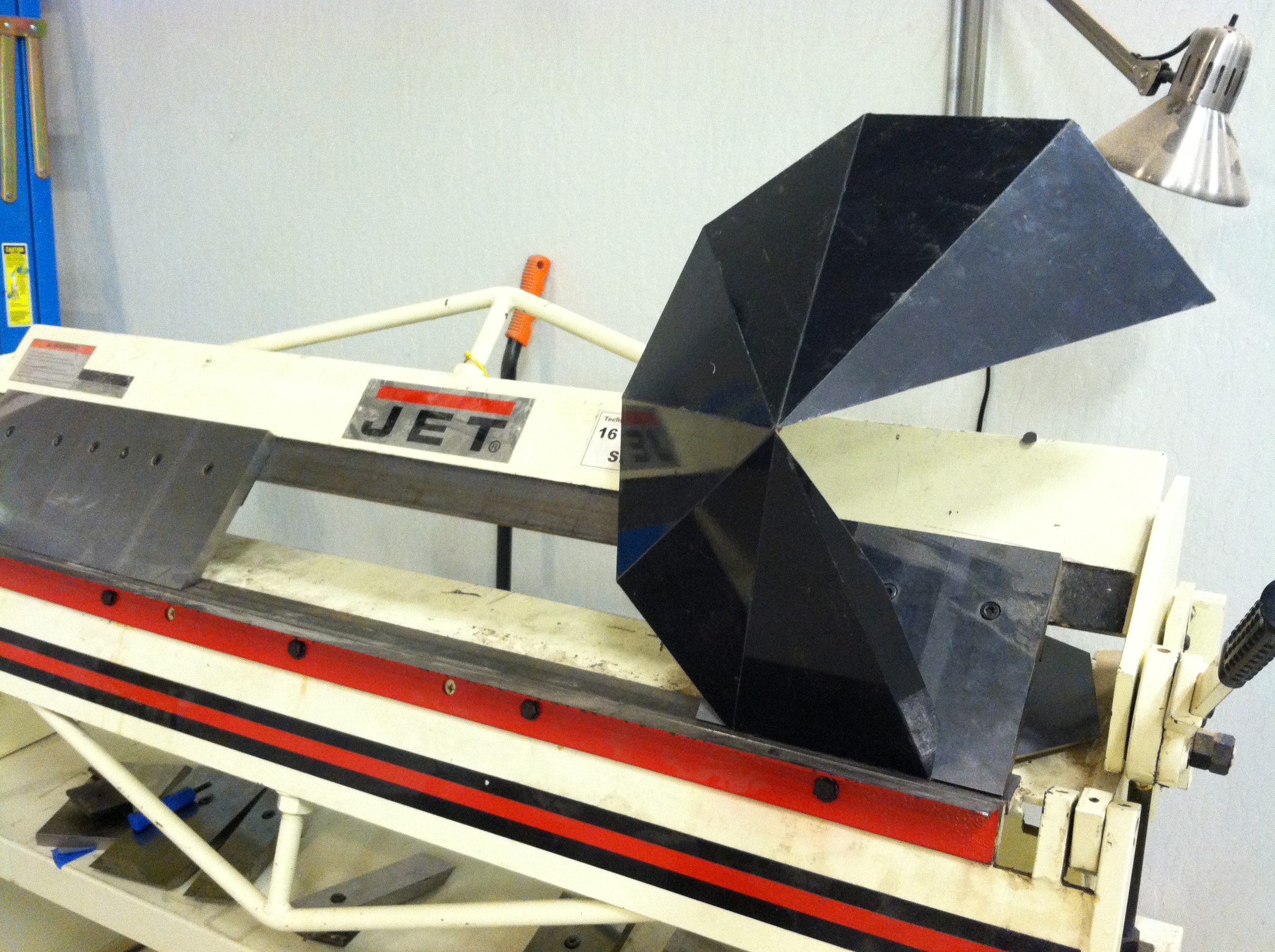
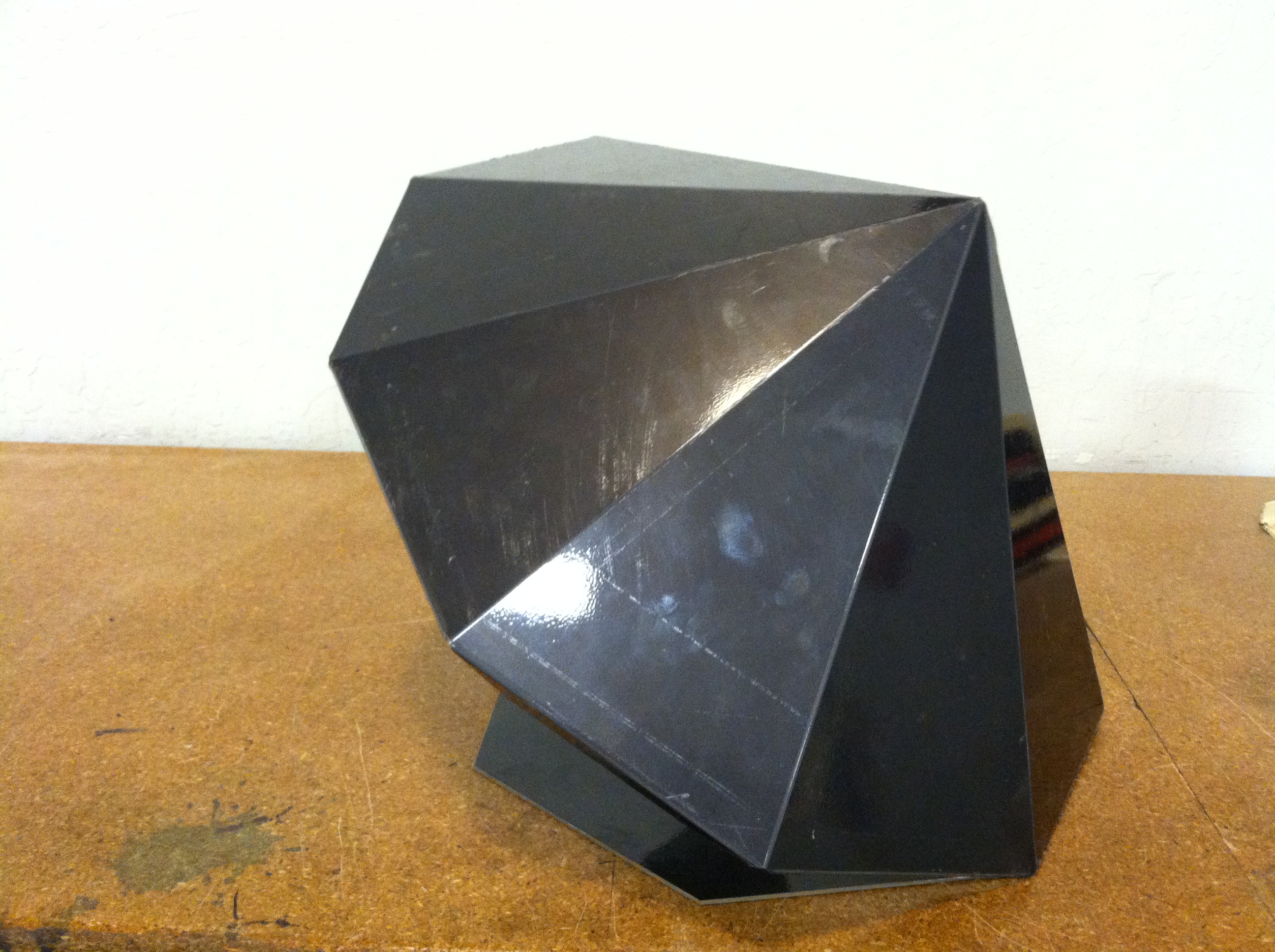
Now, you've got a lovely polyhedra and you're ready to fold it up. This moment is exciting, but it's where the tricky part begins; you want to be very careful about fold order.
-Start with the small support flanges.
-Move to the side facets, working out in both directions from the center.
-Lastly, fold the base into place.
You're not folding all the way to the proper geometry at this point; just getting the folds started. You'll be finishing them the good old fashioned way, by hand!
-Start with the small support flanges.
-Move to the side facets, working out in both directions from the center.
-Lastly, fold the base into place.
You're not folding all the way to the proper geometry at this point; just getting the folds started. You'll be finishing them the good old fashioned way, by hand!
Make It Perfect!
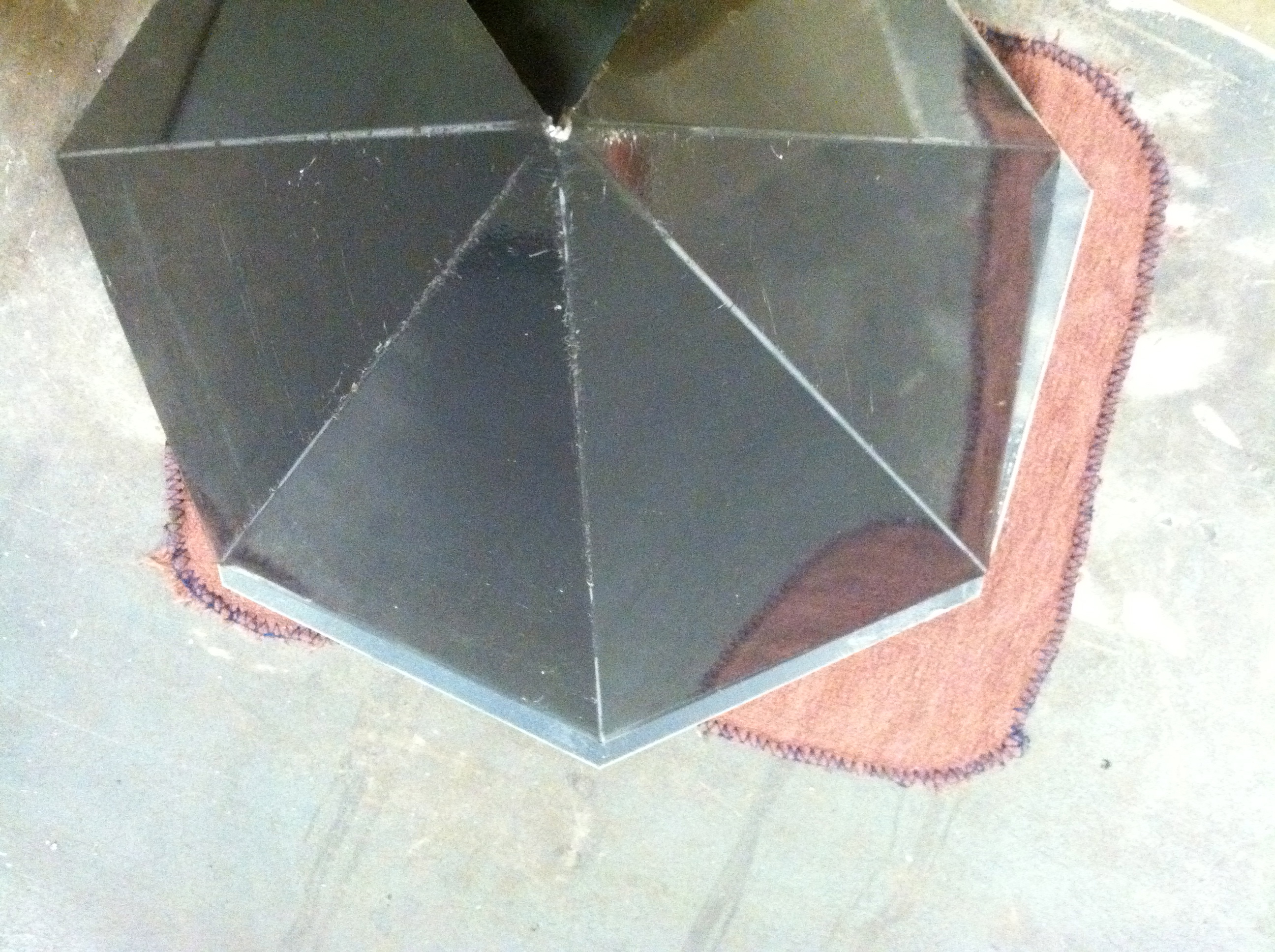
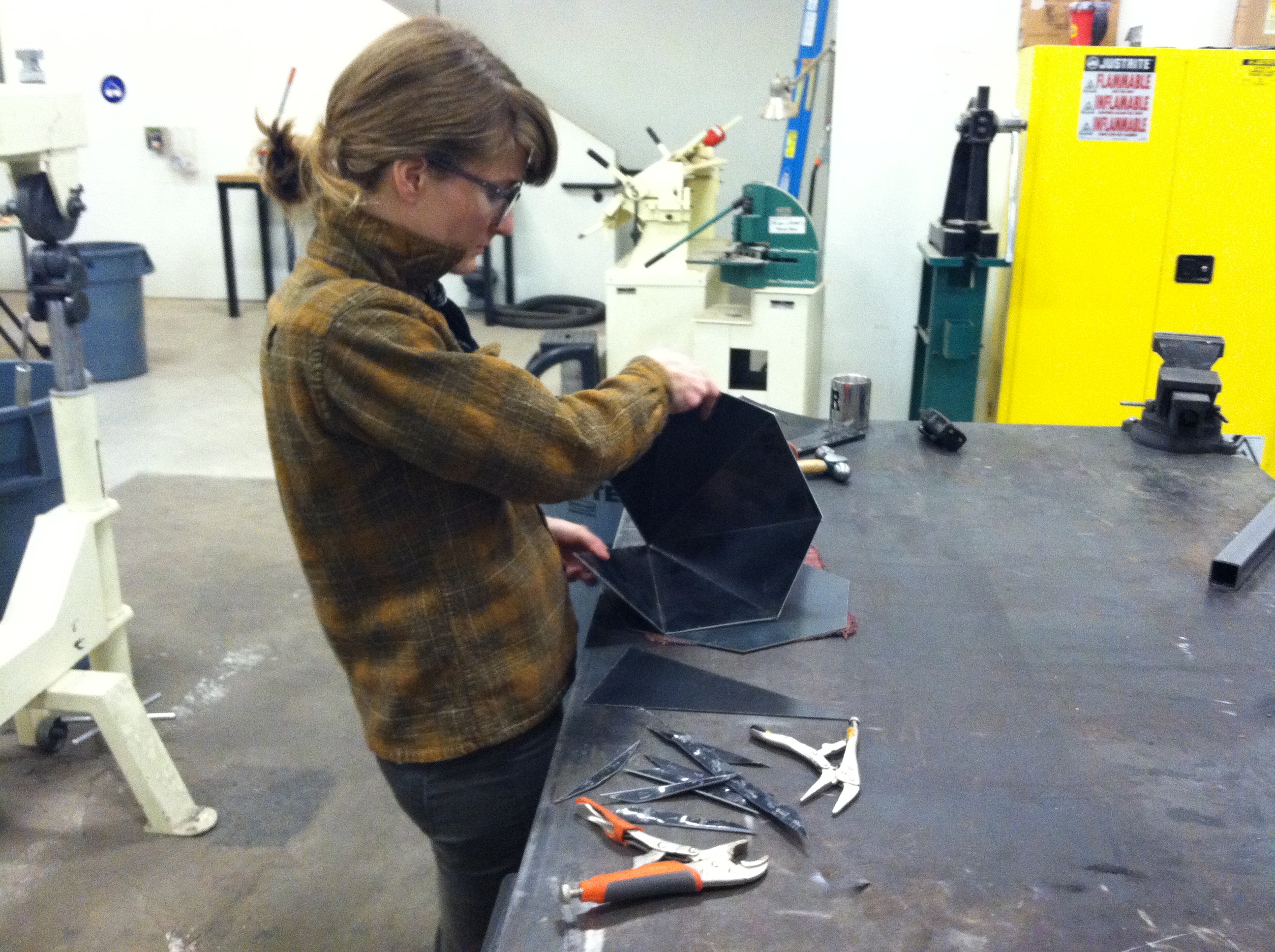

Use the base to line up the sides and see what needs to move where to achieve polyhedral perfection.
Gently, using not too much of your body weight, bend the sides into place. If you're too aggressive, the bends will snap right off due to the scoring. Keep referring back to the base to check your angles. It's easier to start from the edge that's attached to the base, rather than the open facet.
Use a dead blow against the bench near the point, but only if you must... and be careful!
Gently, using not too much of your body weight, bend the sides into place. If you're too aggressive, the bends will snap right off due to the scoring. Keep referring back to the base to check your angles. It's easier to start from the edge that's attached to the base, rather than the open facet.
Use a dead blow against the bench near the point, but only if you must... and be careful!
Admire Your Pyramid.
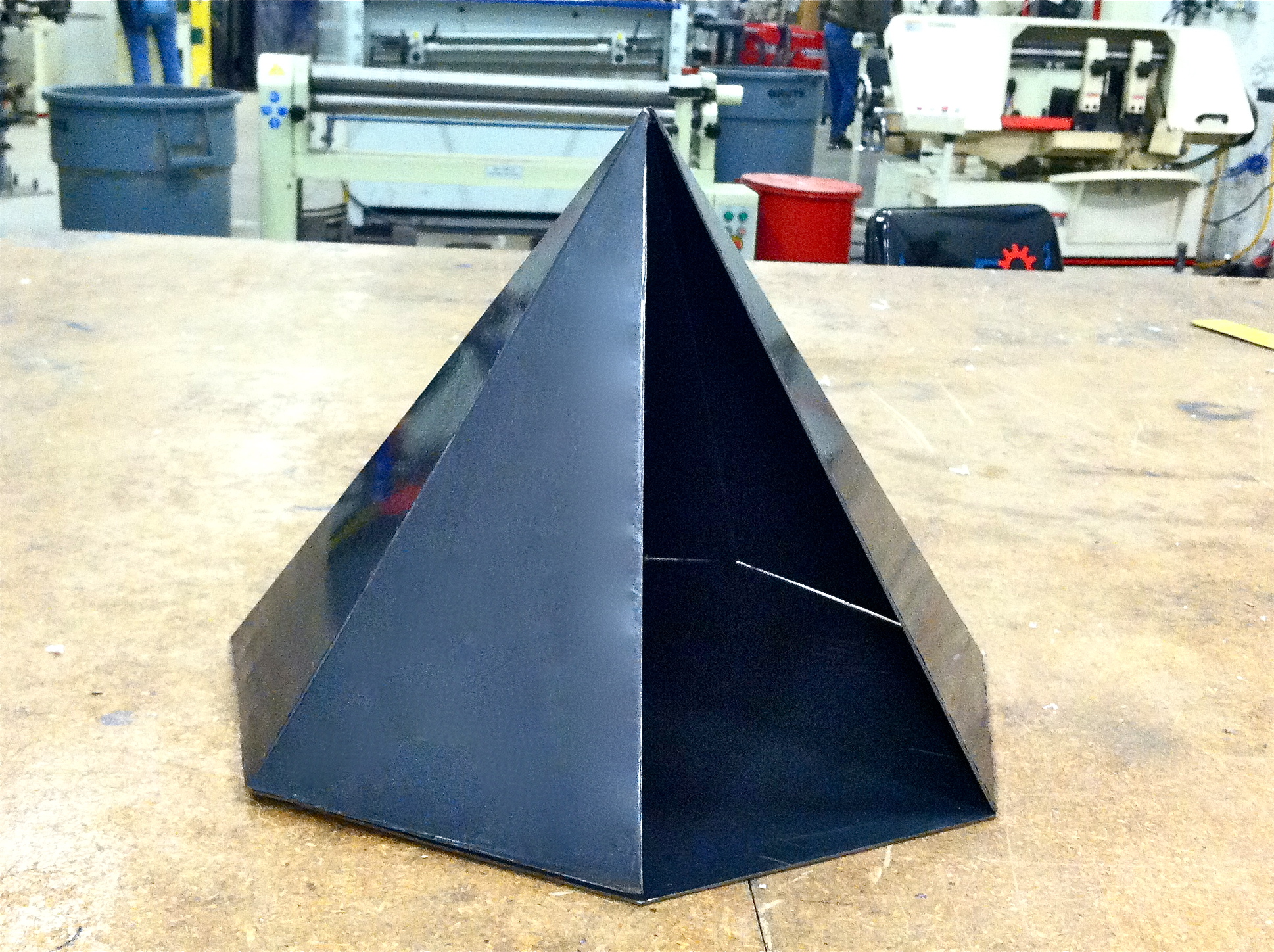
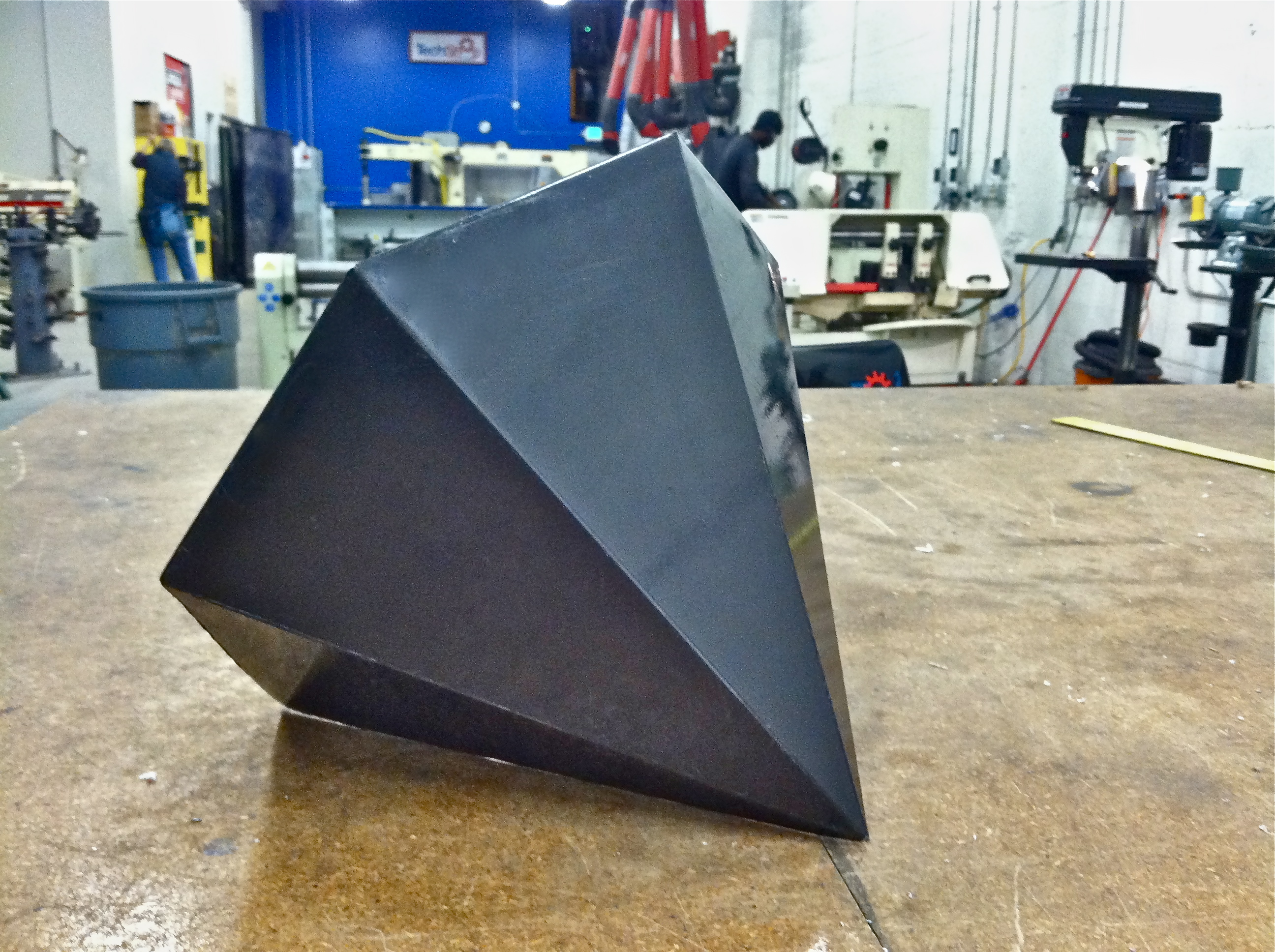
Look, geometry is awesome, right? Now go make some sheet metal shapes, kids!
(Part way through the documentation I decided to make this pyramid into a light, so I removed some faces... if you decide to do the same, you can just bend them back and forth until they snap off at the score.)
(Part way through the documentation I decided to make this pyramid into a light, so I removed some faces... if you decide to do the same, you can just bend them back and forth until they snap off at the score.)